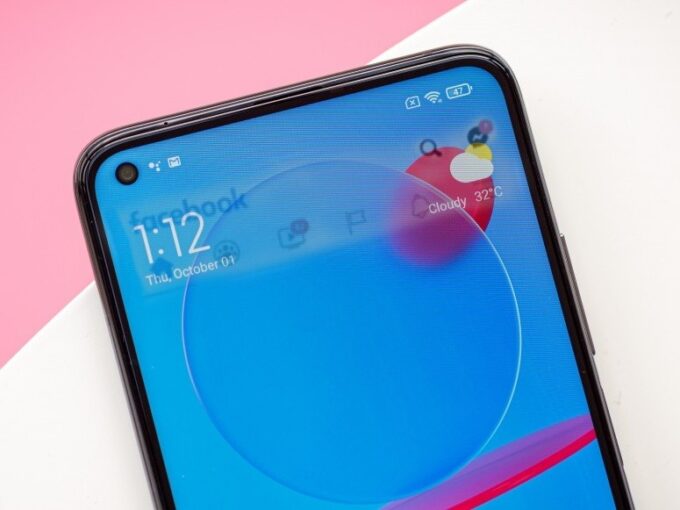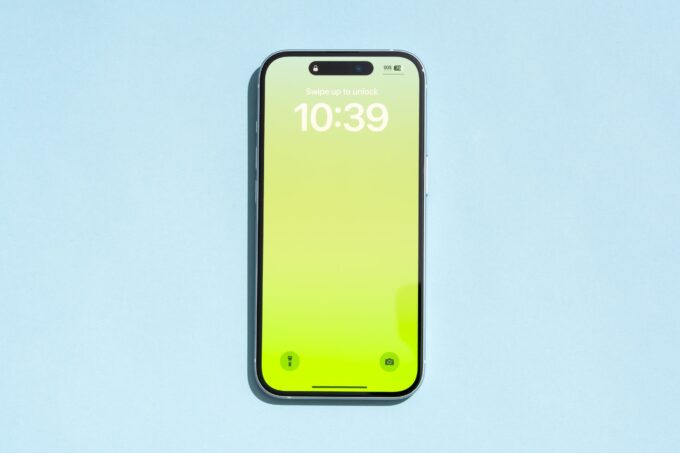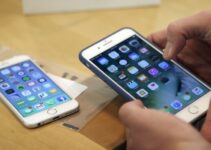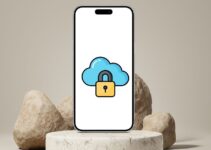Did you know that nearly one in four iPhone users have reported a touchscreen malfunction at some point in their usage? The frustration of trying to operate an iPhone with an unresponsive bottom screen is a common debacle many face. This particular issue can hinder essential tasks like typing, swiping, and accessing key apps. Discovering proven ways to fix the bottom of the iPhone screen not working is crucial for maintaining the seamless operation and longevity of one’s device. Whether the path leads to iPhone screen repair or a more straightforward iPhone screen replacement, one thing remains clear – resolving these malfunctions is essential for a fully functional smartphone experience.
Key Takeaways
- Understanding the common causes of iPhone bottom screen malfunctions is a cornerstone of effective repair strategies.
- Simple troubleshooting methods can often alleviate unresponsive screen issues without needing professional assistance.
- Hardware and software diagnostics are key to differentiating between quick fixes and the need for iPhone screen replacement.
- Routine updates are not only preventive measures but can also serve as solutions to existing touchscreen responsiveness concerns.
- When DIY solutions fall short, utilizing professional iPhone repair services or tools is a reliable next step.
- Regular inspection of iPhone cases and screen protectors can prevent unnecessary screen responsiveness problems.
- Identifying the signs quickly and responding with tried-and-tested solutions can avoid a full iPhone screen replacement.
Identifying the Root Cause of iPhone Screen Malfunctions
When an iPhone screen is not responding, it’s crucial to identify what’s behind the problem to take the appropriate steps toward resolution. Several factors could be at play, each requiring its specific fix. From physical damage to software glitches, understanding the root cause is the first step in troubleshooting iPhone screen issues effectively.
Physical damage, such as cracks or breaks caused by drops, is one of the most obvious culprits when it comes to an iPhone screen that’s not responding. The damage can interfere with the screen’s ability to register touch, leading to partial or complete unresponsiveness. Sometimes the issue might not be immediately visible, so even if a drop didn’t result in a cracked screen, it could still affect the underlying components.
Nonetheless, not all screen malfunctions stem from physical harm; software-related problems can render the screen non-functional as well. These troubles can occur after updating to a new version of iOS or due to an app that’s not performing as it should. Identifying whether a problem is caused by the software will guide the next steps for a solution — whether that means updating apps, reverting to previous settings, or seeking further assistance.
Moreover, accessories like screen protectors and cases can sometimes cause iPhone screen issues. A screen protector of low quality or improperly installed can reduce touch sensitivity, particularly if it does not fit the screen adequately. Similarly, cases that apply too much pressure can also contribute to the screen not responding accurately to touch gestures.
Understanding the diverse origins of iPhone screen problems is essential because it influences the course of action needed to restore functionality.
- Physical damage from impacts or falls
- Corrupted software or glitches following an update
- Faulty or low-quality screen protectors
- Overbearing pressure from protective cases
- App-specific issues that affect screen responsiveness
Once the main cause has been determined, owners can pursue the most appropriate troubleshooting process to fix their iPhone screen not responding, ensuring that the chosen method matches the root issue for the best chance at success.
Proven Ways to Fix Bottom of iPhone Screen Not Working

Source: inquisitiveuniverse.com
When the bottom of your iPhone screen becomes unresponsive, it is not only frustrating but can also hinder the functionality of your device. Users facing iPhone screen freezing, iPhone screen flickering, or an iPhone screen that is outright unresponsive can rely on several troubleshooting methods to resolve these issues. In addition to conventional fixes, it’s imperative to keep your iPhone updated as applying software updates can often smooth out any persisting bugs and glitches.
Restart and Force Restart Options
Performing a restart on your iPhone is a universally recommended first step in troubleshooting iPhone screen problems. If a simple restart does not suffice, a force restart might be necessary, particularly to address an iPhone screen that is freezing or flickering. This involves a specific combination of button presses, tailored to your iPhone model, and can potentially restore responsiveness to an otherwise incapacitated screen.
Screen Protector and iPhone Case Assessment
Regardless of the apparent durability of iPhone screens, many users employ additional protection in the form of screen protectors and cases. However, a poor-quality screen protector or a restrictive iPhone case can be detrimental to screen responsiveness. Removing such accessories should be a primary move when faced with an unresponsive iPhone screen and often provides an immediate remedy.
Diagnosing Software vs. Hardware Issues
It is essential to distinguish if the screen issues arise from software malfunctions or hardware damage. Software issues can usually be resolved with restoration of the device’s settings or by installing the latest software updates. However, if the iPhone screen remains unresponsive or continues to experience flickering, this could signal a need for professional iPhone screen repair or replacement services.
Applying Software Updates and Bug Fixes
Apple frequently releases updates that improve system stability and rectify known bugs. Ensuring that your device is running the latest software is a straightforward yet often overlooked method that can eliminate unresponsiveness at the screen’s bottom. Checking for and installing available updates can significantly improve screen performance and functionality.
Utilizing Professional Repair Tools
In cases where DIY fixes do not produce the desired results, software tools designed to repair common iOS issues can be employed. Professional-grade applications like Joyoshare UltFix or WooTechy iPhixer provide specialized diagnostic and repair services, which are invaluable for restoring one’s iPhone to its optimal state without risking data loss.
Delving into these methods in detail will better equip iPhone users to address and rectify a vast majority of screen-related issues, potentially saving time and money that would otherwise be spent on iPhone screen replacement services.
By applying these proven solutions, users can often troubleshoot and resolve unresponsive screen problems themselves—a valuable skill set in the digital age where the reliability of our devices is paramount.
Conclusion
The journey to rectifying an iPhone screen that’s not responding can often feel daunting, yet, it’s a hurdle surmountable with the correct approach. Whether one is battling with an iPhone screen freezing or dealing with an intermittent iPhone screen flickering, the blueprint for troubleshooting spans a spectrum from fundamental fixes to sophisticated tools. Beginning with a simple reboot might do the trick for transient glitches, with a force restart being the next logical stratagem for more stubborn issues. This escalatory troubleshooting staircase is designed to systematically eliminate potential root causes of iPhone screen problems without necessitating immediate professional intervention.
Despite the allure of a DIY repair with the help of online guides, one must not underestimate the complexity of iPhone screen issues. At times, a malady perceived as a mere iPhone screen freezing could, in reality, be symptomatic of deeper hardware predicaments necessitating iPhone screen repair or even a full iPhone screen replacement. Hence, if traversing through the litany of self-help procedures—ranging from software updates to professional repair tools—does not yield a resurrected touchscreen, soliciting the expertise of certified service providers becomes an imperative course of action. They bear the acumen to diagnose and restore full functionality, ensuring that the device operates seamlessly once more.
In conclusion, the spectrum of solutions for an iPhone screen not responding is broad, and tailored to confront diverse contingencies that an iPhone user might encounter. It’s crucial for users to methodically explore these avenues, proceeding from elementary troubleshooting techniques to professional remedies as needed. In any case, vigilance must be exercised to prevent exacerbating the iPhone screen issues at hand, thereby ensuring the longevity and optimal performance of the user’s device.

Source: nytimes.com
FAQ
What are some common causes for the bottom of my iPhone screen not working?
Common causes include physical damage from drops, low-quality screen protectors impacting touch sensitivity, cases that apply pressure on the screen, glitches in software hardware communication, app-specific issues, and problems from failed software updates.
How can I troubleshoot my iPhone if the bottom of the screen is unresponsive?
Start by restarting your iPhone. If the issue persists, try a force restart by pressing the correct combination of volume and side buttons for your iPhone model. Additionally, remove any screen protectors or tight cases to see if they’re causing the issue, and clean the screen thoroughly.
How can I differentiate between a software or hardware issue for my unresponsive iPhone screen?
If the screen responds intermittently or works in certain apps but not others, it might be a software issue. Try updating your apps and iOS, or reset your iPhone’s settings. If the screen remains unresponsive due to physical damage or consistent malfunction across all apps, it is likely a hardware issue that may require professional repair or replacement.
Are there any specific tools I can use for DIY iPhone screen repair?
Yes, software tools like Joyoshare UltFix and WooTechy iPhixer can help diagnose and fix iOS system errors that might be causing screen unresponsiveness. These tools offer step-by-step guidance and can fix many issues without leading to data loss.
Should I attempt to replace my iPhone screen myself?
Replacing an iPhone screen requires technical know-how and specialized tools. If you’re not experienced, it’s safer and more reliable to have your screen replaced by a professional to ensure the repair is done correctly and to avoid further damage to your phone.



